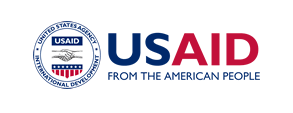The Health Policy Project ended in 2016. Work continued under Health Policy Plus (HP+) until 2022.
NEWS & VIEWS
1.jpg) |
| A researcher in Kisumu, Kenya. Photo by US Army Images, 2010. |
In 2008, Kenya established its National Roadmap to Achieve Universal Access to operationalize an ambitious national goal for HTC: 80 percent coverage of the adult population aged 15 to 64 by June 2011. However, at the time coverage in Kenya was only 53.6 percent, and 82 percent of HIV-positive individuals did not know their HIV status. To increase testing coverage, it was necessary to determine how to use resources more efficiently and cost-effectively to achieve national HTC goals while maintaining high service quality.
With the goal of identifying ways to implement cost-effective HTC scale-up, the Ministry of Health (MOH)—with support from the Health Policy Project (HPP), funded by the U.S. Agency for International Development—undertook costing, cost-effectiveness, and efficiency studies. The process included a thorough analysis of the cost-effectiveness of algorithms used in the testing process. (Algorithms, used widely in health planning and in medical care itself, are formulas that set out a sequence of steps to follow to achieve a specific outcome—in this case, an accurate HIV test result.)
Given the need to increase HIV testing accuracy, until recently blood samples in Kenya had been “parallel tested” using two different types of HIV test simultaneously; if the two sets of results conflicted, a third type of test was used as a “tie breaker.” For greater cost-effectiveness, new test guidelines recommend serial rather than parallel testing, where samples undergo a second “confirmatory” test only if the first test is positive, with a tie breaker used if the first two results conflict.
To determine the most cost-effective testing approach, MOH and HPP staff joined a team of researchers and policymakers to analyze the costs of three different serial testing algorithms selected by a group of scientists and physicians. Each of the three algorithms uses a different combination or sequence of three HIV tests. Calculations included the procurement costs for the different types of rapid test kits, for training for 100 trainers (who will each go on to train 300 healthcare workers), and for new tools and registers. To determine the number of tests needed to achieve the 80 percent coverage goal, Kenya’s National AIDS & STI Control Programme staff estimated that, of 10 million tests purchased, 10 percent would be positive and thus require confirmatory second tests, with 1 percent of those leading to discordant results and a third tie-breaker test.
A comparison of the three options showed that two of the proposed serial testing algorithms yielded approximately 15.30 and 15.34 percent cost savings, respectively, while the third represented a cost increase of more than 1 percent over the parallel testing algorithm. These results, along with considerations for ease of use, test sensitivity, and potential for scale-up, helped the MOH determine the most efficient and cost-effective HIV testing algorithm to adopt.
“The analysis has enabled the Ministry of Health to switch in February 2013 to a more cost-effective testing algorithm, and the resultant savings will be used to scale up HIV/AIDS testing and counseling,” said Dr. Shahnaz Sharif, Director of Public Health and Sanitation at the MOH.
According to the Kenya AIDS Indicator Survey 2012, Kenya has increased HIV test coverage by nearly 20 percent to about 72 percent of the target population. As implementation of the new algorithms and procurement of the new tests increase, achieving or perhaps even surpassing the national goal of 80 percent comes closer to realization.
What's New
- Something to Build On: “Innovation Exchange” Celebrates the Health Policy Project’s Close and a New Beginning
- What Will it Take for Tanzania to Achieve ART Targets and Ensure Long-Term Sustainability of the HIV Response?
- Helping Kenya’s County Leaders Advocate for Increased Health Investments
- HPP Holds Working Meeting on Ensuring Responsible PEPFAR Transitions for Key Populations
- Health Policy Project Celebrates 2016 International Women's Day
- HPP Staff Participate in White House Conference on HIV Stigma Reduction

